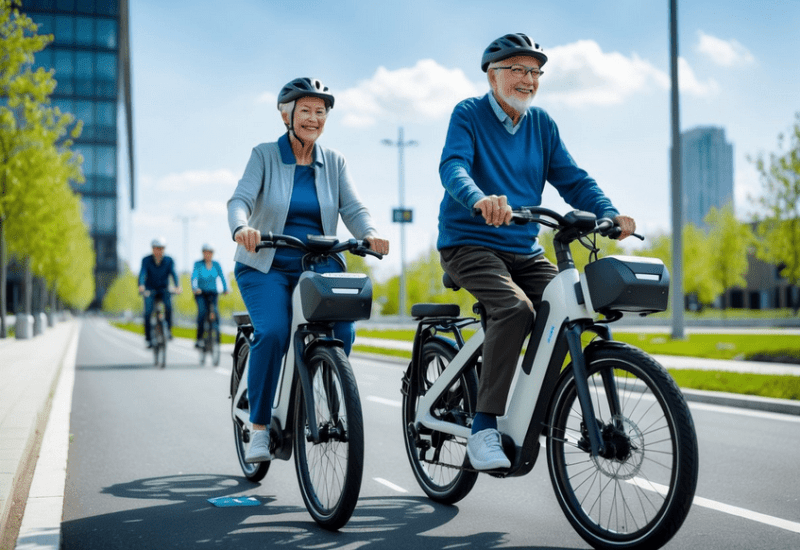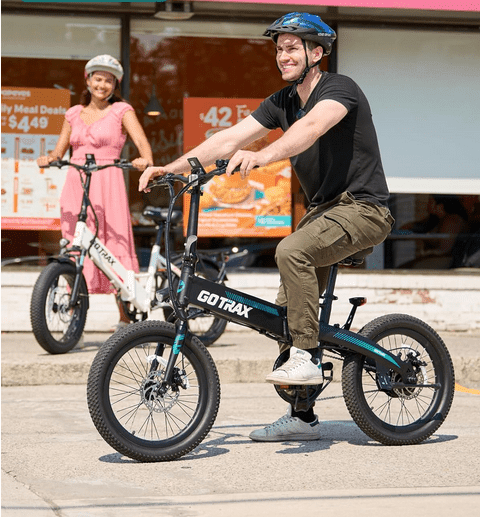Revolutionizing Commuting: The Electric Bike
 The Evolution of Electric Bikes: From Curiosity to Mainstream Transportation
The Evolution of Electric Bikes: From Curiosity to Mainstream Transportation
Electric bikes or e-bikes have come a long way since the early 1990s when they were first introduced. Originally, e-bikes were more of a niche product that only appealed to those looking for a new and different commuting way. However, e-bikes have evolved over the years and become more popular among people of all ages and backgrounds. But how did e-bikes become so popular?
Early Innovations and Interest in Electric Bikes
The first electric bicycles were invented in the 19th century, but the idea didn't take off until the 1990s. In 1995, e-bikes were introduced to the market in Japan and quickly became popular due to the high cost of gasoline at the time. Japan's love for e-bikes quickly spread to Europe, where commuters used them to travel farther distances, easily climb hills, and avoid traffic congestion.
The Rise of E-Bikes as Sustainable Transportation
E-bikes have always had a green advantage, but as people became more conscious of their environmental impact, the demand for e-bikes grew. With zero emissions, e-bikes are considered the most environmentally friendly form of transportation, and they also have the added benefit of helping people stay fit and healthy. As cities and towns worldwide became more and more congested, people started to turn to e-bikes as an alternative to cars and traditional bicycles.
The Growth & Development of E-Bikes Today
Today, e-bikes have become a mainstream form of transportation. They are in many different styles and designs, including folding e-bikes, cargo e-bikes, and mountain e-bikes. The affordability and practicality of e-bikes have helped to increase their popularity, and manufacturers are now producing e-bikes that are better designed, lighter, and more powerful. The battery technology has improved, making e-bikes more reliable, and the range of each charge is ever-increasing. Additionally, many cities have started to install bike lanes and bike-sharing programs, making it easier for people to use e-bikes to get around.
The Future of E-Bikes
The future of e-bikes looks bright. Government initiatives and incentives are making e-bikes more accessible to the masses, with countries like Switzerland, the Netherlands, and China leading the way in e-bike use. Developing and adopting new technology in e-bikes will only improve their performance and make them more practical and usable. The more e-bikes are used, the more accessible we'll see them become in everyday society.
In conclusion, e-bikes have evolved from curiosity to mainstream transportation in just a few decades. As technology and awareness continue to grow, e-bikes will remain a popular and ideal solution for congested urban cities and a green and healthy mode of transportation.
How Electric Bikes Are Changing Our Commutes and Our Environment
Electric bikes, also known as e-bikes, have gained much popularity over the past few years. These bikes have an electric motor that provides pedal assistance to the rider, making it easier to pedal and travel further distances. E-bikes are transforming the way we commute and are having a positive impact on the environment.
Improving Our Commutes
One of the biggest advantages of e-bikes is their convenience and efficiency. Commuting on an e-bike allows you to avoid traffic congestion and long wait times for public transportation. E-bikes also allow riders to travel further distances than they would on a traditional bike, making commuting to work or running errands more accessible and feasible.
Electric bikes are also a great way to stay active and improve health. The pedal assist system allows you to exercise without putting too much strain on your joints or muscles. This can be especially useful for people with health issues or physical limitations preventing them from riding a regular bike.
Reducing Our Environmental Impact
The environmental benefits of e-bikes are becoming increasingly evident. With concerns about climate change and air pollution, many people are looking for more eco-friendly transportation options. Compared to traditional cars, e-bikes emit less greenhouse gases and have a smaller carbon footprint.
Electric bikes also reduce the noise pollution created by vehicles, making the streets a quieter and more peaceful place to be. Additionally, e-bikes are a great alternative to public transportation, which can be a significant source of emissions.
The Future of Transportation
As the popularity of electric bikes continues to grow, many cities are implementing bike-friendly infrastructure to encourage more cycling. This includes adding bike lanes, bike parking, and bike-sharing programs. Some cities have even created designated e-bike lanes to promote their use further and make them more accessible.
With their benefits, e-bikes quickly become a popular alternative to traditional bikes and cars. As we prioritize sustainability and environmental responsibility, electric bikes could become a regular sight on our streets and significantly change how we move around our cities.
Choosing the Perfect Electric Bike: Tips and Considerations for Every Rider
Electric bikes have gained immense popularity among cyclists for their multiple benefits. Whether you are an avid cyclist or just starting, an electric bike can help you easily achieve your fitness goals and commute. Here are some tips to help you choose the perfect electric bike that suits your needs and preferences:
1. Purpose
Different electric bikes serve different purposes. Determine what you need an electric bike for – commuting, exercise, adventure or leisure – and choose one that fits your purpose. Commuting electric bikes are designed for daily routines, while adventure electric bikes are rugged and can handle rough terrains.
2. Motor Type
Electric bikes have two types of motors – hub motors and mid-drive motors. Hub motors are placed in the wheels and provide assistance on flat terrains, while mid-drive motors are placed in the bike's center and provide better power distribution and control, especially on hills.
3. Battery Capacity
Battery capacity is a crucial factor to consider when choosing an electric bike. The battery capacity affects the bike's range and speed. Choose a battery with a high capacity if you need to cover long distances or travel at high speeds. Also, consider the charging time and the weight of the battery.
4. Frame Size and Material
Electric bikes should fit the rider correctly to ensure comfortable and efficient cycling. Consider your height and weight when choosing the frame size. The frame material will determine the bike's durability, weight, and comfort. Aluminum, carbon fiber, steel, and titanium are common frame materials.
5. Additional Features
Electric bikes come with various features that enhance the riding experience. Some common features include lights, mudguards, racks, suspension, and gears. Consider the features that meet your needs and preferences and choose a bike with them.
Choosing the perfect electric bike can be overwhelming, but with these tips, you can make an informed decision that suits your needs and preferences. Remember to test-ride the bike before purchasing to ensure its functionality and comfort.
SAFETY WARNING
When using our electric bikes, please follow these key safety rules:
1. Helmet: Always wear a helmet.
2. Visibility: Use bright, reflective gear and bike lights.
3. Road Rules: Follow all traffic laws and signals.
4. Speed: Manage your speed based on conditions.
5. Maintenance: Keep your bike in good shape.
6. Skills: Know your abilities and bike handling.
7. Awareness: Focus on the road and avoid distractions.
Your safety and others depend on you. Ride responsibly!
Please note these rules do not cover all potential hazards or risks. Abide by local laws and regulations regarding electric bikes.
Stay safe and enjoy the ride!


